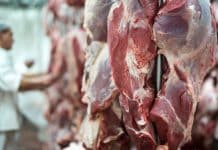The weekly pork carcass price is brought to you by the South African Pork Producer’s Organisation (SAPPO).
How are these prices calculated?
The Red Meat Abattoir Association (RMAA) gathers pricing data from abattoirs via a voluntary contribution to the Price Information System. This data is utilized solely for reporting purposes, ensuring confidentiality as the identities of contributing abattoirs remain undisclosed beyond the RMAA.
Prices specifically refer to the price the abattoir paid to the producer, per kilogram, for pork carcasses and exclude value added tax (VAT), transportation and commission. Prices are based on the chilled carcass mass, including the fifth quarter as paid to feedlots or producers.
The RMAA releases a price report on a weekly basis. The report contains the following:
- The prices per weight category and per class (P,O,R,C,U,S).
- The number of carcasses/units.
- Average mass per carcass/unit.
- The average price per kilogram.
Data categories include porkers (20 to 55,99kg), cutters (56 to 64,99kg), baconers (65 to 79,99kg), heavy baconers (80 to109,99kg) and sows. Categories are classified according to various pork classes, namely P,O,R,C,U,S, with the exception of the sows category. Therefore, the sow category is excluded from the weighted average producer price calculation.
SAPPO utilises the prices of the published RMAA report to create an extended report of pork carcass price analyses, called the Domestic Carcass Price Statistics Report. SAPPO calculates weighted average national-, category- and class prices based on the number of carcasses and average weights of the carcasses grouped per class (not individual carcasses).
Important notes
Domestic pork carcass prices are weighted averaged abattoir purchase prices per category and/or class.
Purchase prices are the chilled carcass mass, including the fifth quarter as paid to feedlots or farmers. The carcass purchase price excludes value-added tax (VAT), transportation and commission.
Weighted average abattoir purchase price takes the number (units) and average weights of the animals into consideration.
Nominal carcass prices = Abattoir Purchasing Prices that is not adjusted for inflation.
Consumer price index (CPI) indicate the percentage change in prices levels compared to a base year (i.e. Dec 2016=100) i.e. inflation
Real carcass price = Nominal carcass price / consumer price index.
Pig housing: Clever facilities that maximise production
Profitability price to yellow maize ratio = Average Abattoir Purchasing Price (R/kg) / SAFEX Yellow Maize Price (R/kg).
Due to feed being such a significant cost component, the higher the SAFEX Yellow Maize Price in relation to the Purchasing Price, the lower the Profitability Ratio, indicating lower profitability. The opposite holds true for a decrease in the SAFEX Yellow Maize Price.
International prices are based on various weighted average price calculations per classification and/or class, market and country and serves as an indication of international prices converted into a Rand/kg price. Denmark’s price quotations are weighted average per warm kg of slaughtered (settlement) weight which is converted into cold slaughtered weight, excluding edible offal. Germany’s final price is based on the muscle-to-bacon ratio, slaughter weight and meat percentage. The USA – Iowa/Minnesota price is a purchase matrix based on both fat and muscle measurements for a 200 lb carcass base. South Africa’s carcass prices are a weighted averaged abattoir purchasing price calculated per category and class.
Kindly register on the World of Pork platform for additional information.
Follow this link for other market posts.







